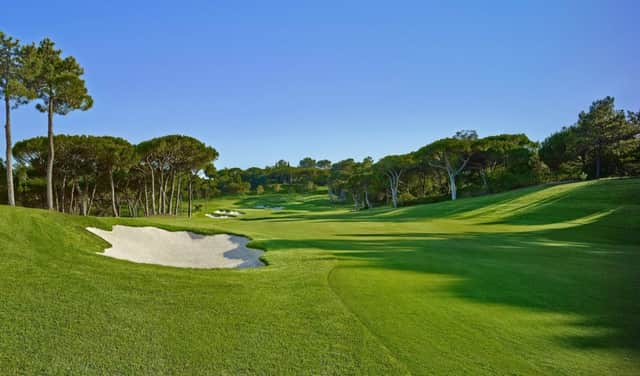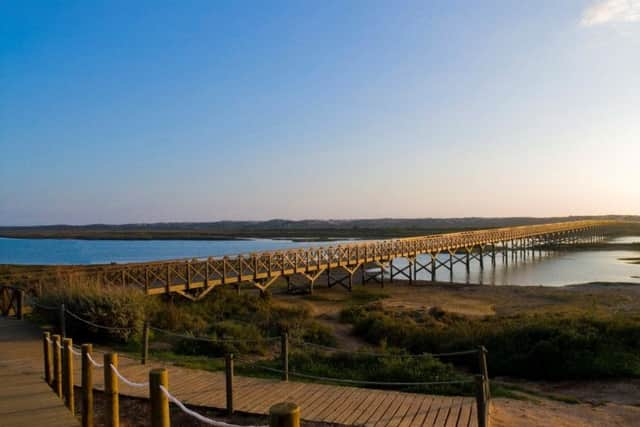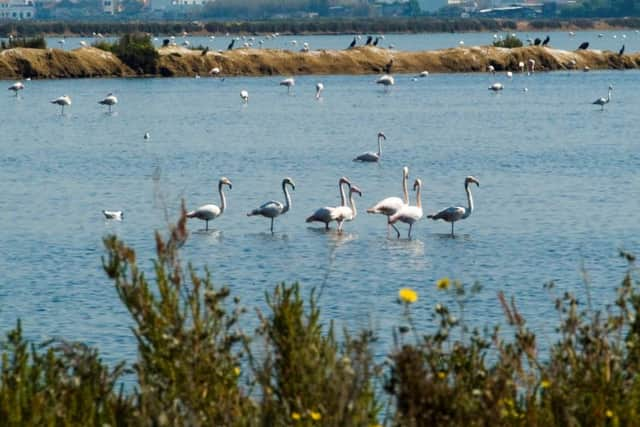Travel: Algarve has green tourism down to a tee


Landing at sunset in Faro, with Scotland’s lashing rain just a few hours past, is a sliver of bliss to be savoured like the Moorish-influenced cuisine for which the Algarve is known. Orange and golden light clings to the water of the Ria Formosa, marking the end of another day of clear skies and warm breezes which make this Mediterranean region a sought-after haven throughout the cold season.
The English-language Portugal News in the airport terminal affirms the lure of the land. “British Tourists Hit All-Time High”, proclaims the front page, and although most of the growth during the past year has been in other parts of the country, the Algarve endures as Portugal’s leading holiday destination, attracting seven million foreign visitors every year.
Advertisement
Hide AdThe intensive building that paved the way for this industry has drawn its share of controversy, but it helped pull in well-heeled tourists. And for those willing to look beyond the massive modern infrastructure – there’s no denying the extensive conglomerations of villas, hotels and resorts – there is still plenty of the traditional Algarve to uncover.


Many of the visitor complexes cater to high-spending golf tourists who are drawn by the weather and a network of more than 40 courses, some of which are considered to be among the best in Europe. As pressure has grown to ensure the sustainability of these developments, course managers are increasingly seeking environmental credentials to match the laurels regularly bestowed on their pristine fairways and velvet putting greens.
Standing on the first tee of the North Course at Quinta do Lago, it’s hard to imagine this sweeping par four of more than 300 tree-lined yards was a construction site less than two years ago. Overhauled at a cost of £6.7 million, this snaking championship course reopened in October 2014 after ten months of work to create 18 holes for scratch players up to higher handicappers.
To my mind they have succeeded, as I and my mid-tier handicap manage a round without too much discomfiture. Meanwhile, my two amateur companions playing off 10 and 22 are also turning in performances that would look fairly respectable but for the final member of our foursome, former Madeira Islands Open champion Ricardo Santos, who eases round in 10 under including an eagle at the par 5 18th.
The course is a joy to play, but its latest overhaul, led by architect Beau Welling and 2014 Ryder Cup captain Paul McGinley, was not just an exercise in enhanced customer satisfaction. Low-cut Bermuda around the greens allows for a range of recovery shots to suit all players, but the design also includes the select planting of native grasses and trees to help the environment. Recycled water is used to maintain grassed areas which have been reduced to lower the need for irrigation, and additional animal habitats have been introduced.


All of which should benefit the neighbouring Ria Formosa, an 18-hectare nature reserve that our hosts at the nearby Conrad Algarve are keen to promote as an alternative attraction for golf widowers. The park is a maze of lagoons, salt mashes and islands that provide food and shelter for birds migrating between Europe and Africa. Some of its many brightly coloured residents include pink flamingos, bee-eaters, kingfishers and blue magpies.
Advertisement
Hide AdOther escape routes from the “Golden Triangle” of golf complexes include a 4×4 excursion through the rugged hills of the Serra do Caldeirao cork groves, home to a stretch of the Via Algarviana hiking trail, or a motor boat tour of the Ria Formosa barrier islands. The latter requires accurate timing and precise navigation, as we discover after a belt-busting lunch at Estamine, the only building on the otherwise deserted Ilha Barretta sand bar to the south of Faro.
We arrive through a labyrinth of marshland channels that expand and disappear with the tides, and enjoy an abundant array of appetisers served up by Estamine’s owners, Donna Isabel and Jose. My favourite is the cheese and honey, which could be a meal in itself, but we’re also treated to gazpacho and platters of garlic anchovies before a starter of “beach” prawns, grilled catch of the day and a selection of divine desserts.
Advertisement
Hide AdWe walk it off afterwards along Ilha Barreta’s near-empty shoreline, which also happens to be the southernmost part of Portugal, then head back to the boat to set out for a bit of clam picking. On this leg of the journey we discover how tricky it can be to negotiate these waters – despite the expertise of local guides, we are temporarily grounded in the shallow estuary, though our craft is eventually freed.


Eating is among the most popular pastimes in the Algarve, and the chefs at Gusto at the Conrad do their part to prove it with a conveyor belt of amuse-bouches before dinner officially gets underway with a further five courses.
As you would expect from a restaurant under the direction of Heinz Beck - executive chef at Rome’s famed La Pergola since 1994 – everything at Gusto is flawlessly prepared and heavenly on the tongue. The signature dish of Fagottelli Carbonara, a paper-thin ravioli with the carbonara sauce on the inside, is luscious.
But then again, it’s difficult to find fault with anything at the Conrad Algarve, which has every amenity to be expected of a five-star establishment, from fine dining and luxuriously cavernous guest rooms to heated indoor pool and outdoor infinity pool.
I round off my trip with a visit to the spa, where Richard spends 45 glorious minutes unbinding the knotted leg and shoulder muscles that come after extensive time on the golf course. It makes the flight back to colder climes much more bearable.